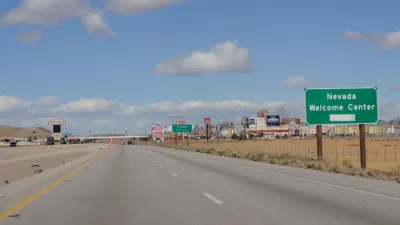The report by the state Department of Housing and Community Development is in the form of a draft assessment that solicits comments. For the last 10 years, the state produced on average 80,000 units annually, while the need was for 180,000 units.

Justin Ewers shares news of a detailed report, "California’s Housing Future: Challenges and Opportunities," which represents "the [Brown] administration’s highest-profile move on housing since last spring, when the governor sought to accelerate housing construction in urban areas by dramatically streamlining the local approval process for multi-family developments." That proposal failed in the California State Legislature in 2016.
In California’s Housing Future, the administration has returned to the fray, offering the first official assessment of the state’s housing goals since 2000—and highlighting the challenges policymakers will have to overcome to make it easier to rent or buy a home in California.
The 2000 report, "Raising the Roof, California Housing Development Projections and Constraints 1997 - 2020," was released not by Brown's predecessor, Gov. Arnold Schwarzenegger, but by his predecessor, Gov. Gray Davis.
The Draft Statewide Housing Assessment by the California Department of Housing and Community Development solicits public comment through March 4, 2017 and will be the basis of public meetings this month held throughout the state from San Diego to Redding, in addition to a January 13 webinar.
Among the report's other findings:
- Lack of supply and rising costs are compounding growing inequality for younger Californians.
- One-third of renters pay more than 50% of income toward rent.
- Homeownership rates are at their lowest in California since the 1940s.
- California [with 12% of the nation’s population] accounts for a disproportionate 22% of the nation's homeless population.
- Continued sprawl will decrease affordability and quality of life while increasing combined housing and transportation costs on families.
"The report includes a range of potential solutions, including streamlining local and state land-use and environmental rules and boosting funding for low-income housing," reports Liam Dillon for the Los Angeles Times. Dillon was also the guest on KPBS (NPR affiliate in San Diego) Midday Edition on Jan. 4 where he discussed the report's findings and recommendations.
Hat tip to MTC Headlines.
FULL STORY: Governor’s Housing Department Releases List of Options for Addressing California’s Housing Crisis

Maui's Vacation Rental Debate Turns Ugly
Verbal attacks, misinformation campaigns and fistfights plague a high-stakes debate to convert thousands of vacation rentals into long-term housing.

Planetizen Federal Action Tracker
A weekly monitor of how Trump’s orders and actions are impacting planners and planning in America.

Chicago’s Ghost Rails
Just beneath the surface of the modern city lie the remnants of its expansive early 20th-century streetcar system.

Bend, Oregon Zoning Reforms Prioritize Small-Scale Housing
The city altered its zoning code to allow multi-family housing and eliminated parking mandates citywide.

Amtrak Cutting Jobs, Funding to High-Speed Rail
The agency plans to cut 10 percent of its workforce and has confirmed it will not fund new high-speed rail projects.

LA Denies Basic Services to Unhoused Residents
The city has repeatedly failed to respond to requests for trash pickup at encampment sites, and eliminated a program that provided mobile showers and toilets.
Urban Design for Planners 1: Software Tools
This six-course series explores essential urban design concepts using open source software and equips planners with the tools they need to participate fully in the urban design process.
Planning for Universal Design
Learn the tools for implementing Universal Design in planning regulations.
planning NEXT
Appalachian Highlands Housing Partners
Mpact (founded as Rail~Volution)
City of Camden Redevelopment Agency
City of Astoria
City of Portland
City of Laramie



























